DMZ Tours from Seoul
Our DMZ tour from Seoul offers a truly unique and unforgettable Korean experience. Glimpse into North Korea from across the most heavily fortified border in the world! But be sure to be on your best behaviour, as this is a politically sensitive and military-controlled area. This tour is not to be missed!

A Brief History and Introduction to the DMZ
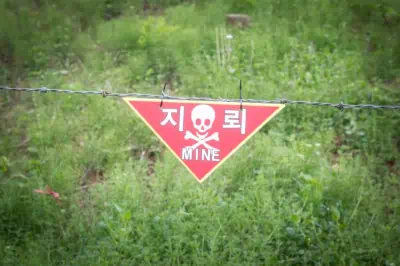
Korea is a divided nation. Since 1953 a 4 km wide stretch of no man’s land, known as the Korean Demilitarized Zone (DMZ), has separated South and North Korea. This buffer zone has become the most heavily fortified and guarded border in the world.
Experts believe somewhere between 1.8 – 2.2 million landmines have been planted here, roughly 1 to 1.2 million by the US and South Korea, and another 800,000 to 1 million by North Korea.
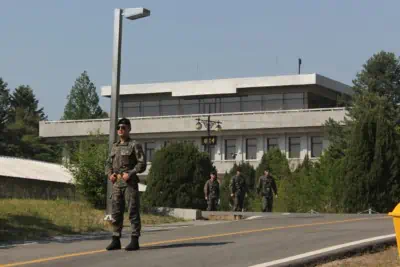
The DMZ was established as a result of the Korean Armistice Agreement between North Korea, China and the United Nations Command (UNC). This “ceasefire” agreement has effectively put the Korean War on hold. The DMZ now reaches 250 km long by 4 km wide, roughly dividing the Korean Peninsula in half.
Inside the DMZ is an area where both nations can meet for negotiations. Today it’s known as the Joint Security Area (JSA), while the original village was called Panmunjom and was located 800 metres further North. However, regarding tours of the DMZ, the JSA and Panmunjom can be considered the same place.
The DMZ today is it safe?
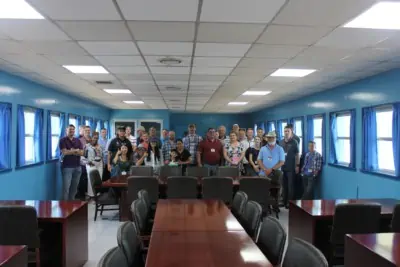
Considering its history and that the DMZ (especially the JSA) has suffered various incidents with both military and civilian casualties, you might be wondering if it’s safe to take your family on a DMZ tour.
Well, you’ll be glad to know that it has become safe for travellers these days. In fact, our DMZ tours from Seoul are one of our most popular day tours.
In addition, since October 2018, both sides have removed all firearms from the Joint Security Area, cut personnel stationed there to 35 on each side, removed 11 guard posts along the demarcation line and removed some landmines.
NO forced shopping stops on our DMZ tours
Our tours are unique in that we offer high-quality DMZ tours from Seoul with No shopping stops along the way. VIP Travel is currently the only tour operator offering this. Therefore, book your DMZ tour with us to make the most of your time during this truly unique Korean experience.
Booking Restrictions for tours of the DMZ
Due to this being a military-controlled area run by the United Nations Command (UNC), there are some restrictions we have to abide by:
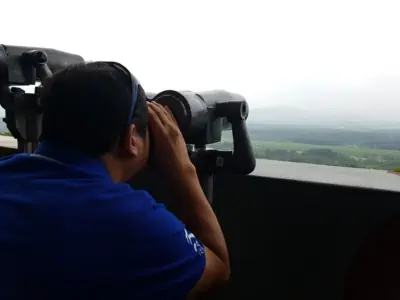
Our DMZ Half Day tour offers very few restrictions and can be booked the day before. All visitors are required to bring either their passport , military ID or Alien Registration Card (local residents). Soldiers will check your identification document at the Unification Bridge and before entering.
Children are also welcome when accompanied by an appropriate parent or guardian as there are no age restrictions in place for this tour.
- Can be booked on relatively short notice.
- Bring your passports (military ID and ARC card also accepted) on the day!
- No age restrictions! Children accompanied by parents are welcome.
JSA / Panmunjeom Tours
The JSA / Panmunjom, on the other hand, have very tight security restrictions for those who wish to visit. We, therefore, require all guests to book a minimum of 72 hours in advance of their preferred tour date, although we recommend booking as far in advance as possible!
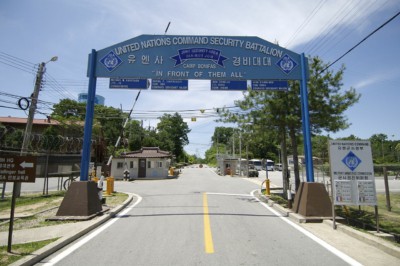
We will also require a full-colour copy of your passport photo page. This is necessary, so we can send it to the UNC to register your visit. Note you will still be required to bring your passport on the day for further ID checks during the tour.
There is also a minimum age restriction for children; children should be at least 12 years old, with no exceptions to this rule.
Our final word of note is that there are limited spaces available. The UNC caps the number of visitors who can visit Panmunjeom per day. Once this limit is reached, booking will no longer be possible. Please feel free to reach out to us regarding your preferred dates to see if there is availability before booking.
- Need to book a minimum of 72 hours in advance.
- Recommended to book as far in advance as possible.
- Passport colour copy required during booking for UNC registration.
- Bring your passport on the day!
- Age restriction: Minimum 12 Years old (No exceptions).
- The UNC limits the number of visitors per day.
DMZ tour Schedule
Tours of the DMZ are possible every day except for Mondays, National Holidays and military training days. We run 2 Half Day DMZ tours daily, one in the morning and one in the afternoon.
JSA / Panmunjeom tours run a similar schedule, except they are also unavailable on Sundays and are more affected by military training and political events. Both our Panmunjeom tour and DMZ JSA tour visit Panmunjom (Joint Security Area).
- DMZ tours: Unavailable on Mondays, National Holidays and some military training days.
- JSA / Panmunjeom tours: Unavailable on Sundays, Mondays, National Holidays, military training days and during some political events.
Panmunjom Dress Code
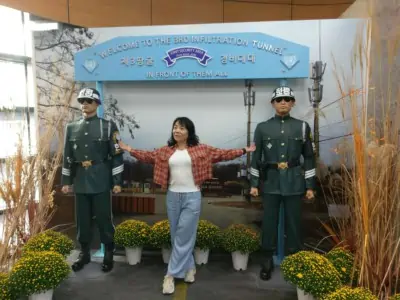
Tours that visit the Panmunjom / JSA have a strict dress code. This is partly because it has been known for North Korean soldiers to take photos of poorly dressed tourists to be used in propaganda efforts.
Visitors are therefore asked to be respectful and abide by the following rules as they will be enforced on the day:
- No sleeveless shirts.
- No t-shirts without a collar.
- No short pants or skirts.
- No sandals.
- No military-looking clothing.
- No clothing showing flags or name of nationality.
So what are you waiting for? Book your DMZ trip now to avoid disappointment!

Showing all 5 results
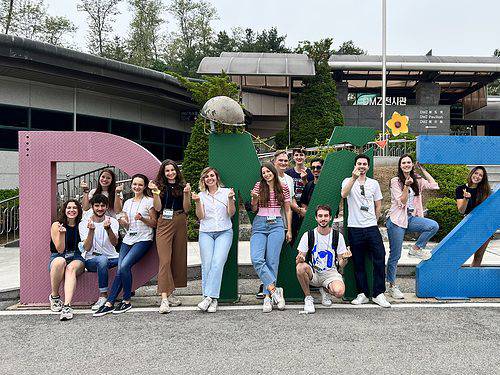
Best DMZ Tour From Seoul (No Forced Shopping)
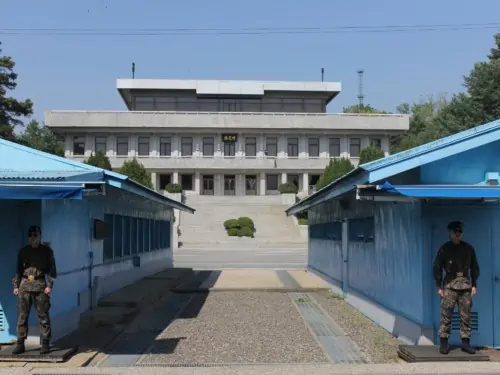
DMZ JSA tour
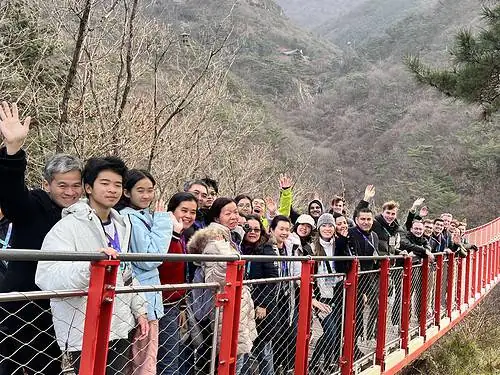
DMZ 3rd Tunnel & Red Suspension Bridge tour
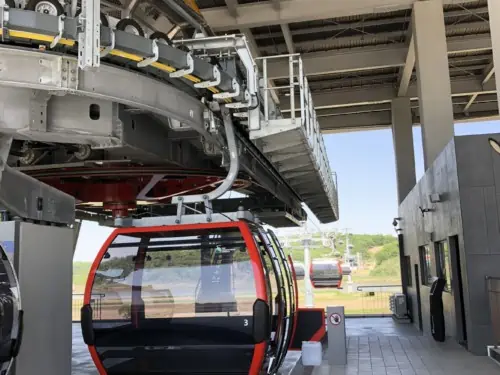
DMZ Gondola Tour
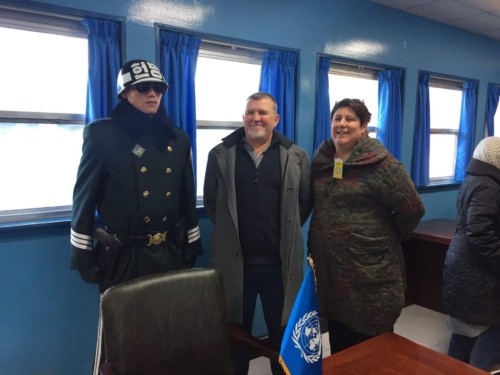
Panmunjom Tour (Without pick-up service)

How to choose the best DMZ Tour (2024 edition)
By: Author Sylvia
Posted on Last updated: January 22, 2024
Are you wondering what’s the best DMZ tour?
When we visited Korea for the first time, we absolutely wanted to visit the DMZ.
We did tremendous research about the best way to visit the DMZ and the best DMZ tour.
What we didn’t know at that time was that the inter-Korean summit would sabotage our plans.
Our DMZ tour was canceled because of the meeting between the North Korean leader Kim Jong-un and South Korea’s President Moon Jae-in.
Covid-19 threw a wrench in the works of our second trip to Korea, but in 2023, the moment finally arrived! We could again travel to Korea, and this time our visit to the DMZ, became a reality. Hooray!
The visit to the DMZ is slightly different after Covid than it used to be. We share all the latest details.
Here’s everything we learned from our extensive research and from our visit in 2023.
There is a really good chance that this post contains affiliate links. If you click one of them, we may receive a small commission (for which we are deeply grateful) at no extra cost to you.
In a hurry? Here you will find the most important information about the DMZ
The DMZ is an interesting place to visit and a perfect way to learn more about Korean history and the current situation of separation between North and South Korea.
- The cheapest way to visit the DMZ is with the DMZ peace train . (The train has stopped running due to COVID-19 and service has not yet resumed at this time. )
DMZ half or full-day trip
- DMZ half or full-day trip ( is slightly cheaper than the one above, but at the moment only runs on Saturday or Sunday )
- DMZ Tour with Optional North Korean Defector
- If you are traveling with a larger family or a group, you could consider a private tour with a guide
- After 2 years of being closed, the JSA is finally reopening. Note that JSA Tours are very popular and are quickly booked up. If you want to visit the JSA you should book your tour as soon as your travel plans are fixed. Read on to learn the difference between the DMZ and the JSA .
Table of Contents
What’s the DMZ
In order to completely understand what the DMZ is all about we will start with some history.
The complete Korean peninsula on which both North and South Korea are currently located was annexed by Japan in 1910. The Japanese treated Korea as a colony. The interests of the Koreans were completely subordinate to the interests of Japan.
Japan was defeated by the Allies at the end of the second world war in 1945. At that time the Soviet Union had occupied the Northern part of Korea and the United States took control of the Southern part of the Peninsula.
7 days in Korea, the perfect itinerary.
The intention of the two superpowers was to create a temporary separation between the 2 parts. Plans existed to create a united and independent Korea in 5 years but things turned out differently.
The Cold War ensured that there was no agreement to hold elections for the whole of Korea.
The differences in politics drove the 2 parts further apart instead of coming to each other.
In 1948 the independent Republic of Korea was established in the American zone. In the same year, the Communist Democratic Korean People’s Republic (North Korea) was founded in the north.
Two years later the Northern army invaded the South with the aim of uniting the two Koreas into one communist state. This was the start of a 3-year-long civil war that claimed more than 2 million victims.
Initially, the Northern army succeeded in overrunning 90% of the South but they were fought back by US-led reinforcements sent by the UN.
In their turn, they crossed the border and made plans to conquer the whole North, against the will of China that launched a counter-attack.

It took until July 27, 1953, before the Armistice Agreement was signed.
The two parties took long to negotiate where the new border should be but in the end, it was decided that the border remained more or less where it had been all the time.
The new border diagonally crosses the 38th latitude and was widened with the creation of a four-kilometer-wide weapons-free buffer zone between the states, known as the DMZ.
The war left its traces and further perpetuated the division of Korea leading to a permanent alliance between South Korea and the United States and the establishment of a US base in South Korea.
There has been a truce since then but o fficially the 2 countries are still at war with each other. We read about how you can literally feel the tension at the border where the armies of both countries are facing each other.
In other parts of South Korea, such as Busan , you do not notice much of the war except that foreign navigation systems, such as Google Maps, do not work because South Korea requires that all mapping data is stored locally. The government also enforces that military bases are removed from maps. Apparently, Google couldn’t promise to obey to all these rules.
In 2018 both countries have done a considerable effort to ease their relations. At the Korean summit in May 2018, they vowed to officially end the war within a year.
Since then several other meetings have taken place between both parties as well as a historic meeting between President Trump and Kim Jong-un in June. That was the first time that the sitting leaders of these countries spoke in person.
We are now well past this deadline and nothing has come of it. Relations between the two countries have even deteriorated again.
It would be great news if Korea would finally be reunited but at this point, it doesn’t seem like this will happen anytime soon.
Over time the DMZ will hopefully transition into a more amicable place but nothing has changed for the time being.
It may be one of the world’s most heavily militarized borders but it’s also one of the most visited tourist attractions in Korea. The DMZ welcomes more than 1.2 million foreign travelers each year, according to the Korea Tourism Organization.
Why visit the DMZ
The guided tours are very educational and some tours have a North Korean defector as a tour guide who can give you more insight into how life is on the other side of the border.
It is at this point one of the few still active remnants of the cold war and that makes it extra special.
Americans and South Koreans are not allowed to travel into North Korea, for them this will be the closest they can get to this isolated country. And despite the fact that other nationalities are allowed to travel to the country, there are not many who do it.
The DMZ is described as one of the most volatile regions in the world and it is a border post that has torn thousands of families apart and still holds them hostage in their “new” country.
It feels strange that at the same time it is one of the top tourist attractions in this country.
We wondered if we would not feel guilty that we as a tourist came to look at a place that is the source of so much misery for other people.
What convinced us is that we believe that, by showing this to people, hopefully, the following generations will learn from the mistakes of the past.
What is the difference between the DMZ and the JSA
With regard to the tours, there is a distinction between the DMZ and the JSA tours in Korea.
JSA refers to the Joint Security Area , this is as close as you can get to North Korea.
The JSA is what most people probably think about when they think about the Korean border. This is the area with the blue barracks that are used for all the negotiations between the North and the South.

This is an iconic picture of the JSA but things may be different today. One of the first things that North and South Korea agreed upon was to clear the JSA of all weapons and military. This disarmament was completed in October 2018.
The good news is that they also decided to preserve the JSA in its current state.
Later on, in this article, we discuss in more depth the different points of interest that DMZ and JSA DMZ tours cover.

Who can visit the DMZ?
Everybody can join the DMZ tours but at this point, certain restrictions are still in place regarding the JSA.
Since the JSA has been disarmed the expectation is that these restrictions will disappear in the near future.
Until that is a fact, these nationalities can visit the JSA but will need to provide a scan of their passport at the time of booking a tour. Albania – Afghanistan – Algeria – Azerbaijan – Bangladesh – Bahrain – Belarus – China – Cuba – Egypt – Estonia – Georgia – Hong Kong – Iran – Iraq – India – Indonesia – Jordan – Kazakhstan – Kuwait – Kyrgyzstan – Latvia – Lebanon – Libya – Lithuania – Malaysia – Morocco – Moldova – Nigeria – North Korea – Oman – Pakistan – Qatar – Russia – Saudi Arabia – Somalia – Sudan – Syria – Taiwan – Tajikistan – Turkmenistan – Tunisia – Ukraine – United Arab Emirates – Uzbekistan – Vietnam – Yemen Visitors with European, American, or Australian nationality do not have any restrictions when visiting the JSA.
Children must be accompanied by their parents for both the JSA as well as the DMZ tours.
Some tour companies require that children are at least 10 years old before they can participate in a JSA tour. If you’re planning on doing a DMZ or DMZ/JSA tour with small children we recommend that you check with the tour company.
Things to know when visiting the DMZ
Opening hours.
The DMZ tours don’t run on Mondays and Korean holidays ( except Korea’s New Year and Thanksgiving Day).
If the Korean holiday happens to be during a weekend, there is a chance that the DMZ tours will run anyway.
We cover an alternative DMZ tour that you can do if your only chance is to visit the DMZ would be a Monday. More about this tour later.
Things you should bring
A current valid passport is required for both the DMZ as well as JSA DMZ tour.
You have to take your passport with you.
Without your passport, you won’t be allowed to join the tour.
A dress code applies when visiting the JSA.
The dress code is expected to disappear now that the disarmament of the JSA is a fact but for the time being, we would advise you to stick to the dress code or to check with your tour operator to confirm what you will be wearing is OK.
This is the dress code:
- Skirts/dresses need to be at least knee length
- No sandals, flip-flops,s or slippers
- No t-shirts: must be collared shirts
- Civilian clothes preferred
- Jeans accepted with no holes (no ripped jeans)
- No tank tops
- No exercise clothes
- No clothing with militarily styled prints
- No stretch pants/tights
The reason that the dress code is in place has nothing to do with security as most would think.
The dress code came after it appeared that North Korea used photos of “sloppy” dressed foreigners to use them in their propaganda. The North Korean government used the photos to showcase the poor state of the other countries.
For this same reason, it is not allowed to wave to the North Korean guards. Images of foreigners waving to North Korean guards have been used in propaganda and have been framed as people who wanted to defect to the communist state.
Codes of conduct
There is still a strict code of conduct in place as we write this article. You mustn’t wave, point, or in any other way signal to the North Korean guards.
Photos are also not allowed everywhere. The guides will tell you what you can and cannot take pictures of. (eg. it is not allowed to take pictures inside the 3rd infiltration tunnel)
When you tour the JSA you must at all times stay with your guide and the military escorts and comply with all the instructions given by your guide and the military.
The disarmament will result in a more relaxed code of conduct in the future.
Most interesting points of interest
The most interesting sights are the Joint Security Area, the Freedom Bridge, the Infiltration Tunnels, and the Mount Odu Observatory.

The Joint Security Area (JSA)
Located in Panmunjom, the JSA is the closest point a tourist can get to North Korea without getting arrested or shot.
Here you’ll have a chance to physically stand in North Korea. It is also the only spot in the DMZ, where the South and North Korean soldiers face each other.
The JSA area is occupied by the South Korean and US military.
Bill Clinton repeatedly called this border post the scariest place on earth but it is touristy at the same time. There is even a gift shop selling original items from North Korea, including stamps, money, and wine.
A visit to the JSA zone usually starts in Camp Bonifas.
This is a United Nations Command military post that houses the United Nations Command Security Battalion of the Joint Security Area whose primary mission is to monitor and enforce the Korean Armistice Agreement of 1953.
Here you will normally also be given a 20-minute briefing by an American soldier explaining the rules and possible dangers.
There are quite a few rules you should follow so listen carefully. You cannot take any loose items with you, if you bring a coat you have to wear it all the time (you cannot hang it over your arm), you will also have to walk to the actual border in “formation” and have to set up in rows, etc.
At this point, you’ll also be signing a waiver that absolves South Korea, the UN, and the USA in case any incidents will arise. The waiver explicitly states that the visitor’s safety is not guaranteed in the event of unanticipated complications.
A standard formality because in recent years there have been no accidents and these tours are done on a regular basis.

This document also provides more information about photo privileges, specifically when and where you’re allowed to take pictures.
Once everybody has signed the waiver a tour bus brings you to the freedom house.
Here two South Korean soldiers of a special unit stand guard facing soldiers from North Korea. Often there is only one soldier on the side of North Korea.
The JSA is the only part of the DMZ where North and South Korean soldiers are face-to-face. They stare at each other all day long and have been for several years.
A little later you can enter the conference room. This is the actual conference room where the armistice agreement was signed. In this room, you will get the chance to cross the border. The border cuts the conference room in 2 so when you cross the room to the opposite side you’re effectively in North Korean territory.
This concludes your visit to the actual JSA zone, next you get a short tour along a lookout point towards North Korea from where you can see the Propaganda Village.
This is a well-tended village just along the North Korean border that is supposedly housing 200 families, several schools, and a hospital.
Tourists seldom see any movement in the village and it is believed that North Korea only built the town for propaganda purposes. Hence the name South Koreans gave to the town.
You will also visit the location of the Korean ax murder incident. Two American soldiers were killed here by North Koreans while cutting a tree.
Another highlight is the bridge of no return.
This is the bridge where prisoners between the two countries were exchanged after the Korean War.
The name originates from the final ultimatum that was given to prisoners of war brought to the bridge for repatriation: they could either remain in the country of their captivity or cross the bridge to return to their homeland.
However, once they chose to cross the bridge, they would never be allowed to return, even if they later changed their minds.
After 2 years of being closed, the JSA is finally reopening.
Note that JSA Tours are very popular and book out quickly. We therefore recommend that you book as early as possible so that you can choose your desired date.
Check prices and availability: DMZ-JSA Tour

Imjingak Park and the Freedom Bridge
Imjingak Park has an important sentimental and symbolic meaning. This park commemorates families who are separated because of the split between North and South.
The remnants of the Freedom Bridge can be seen from the park. This bridge was long 1 of only 2 bridges that crossed the Imjin River.
It had long served peaceful purposes but its position close to the Korean border made it of crucial importance during the Korean War.
The bridge was destroyed early in the war, making the Imjingang bridge alongside it the only connection to supply the Southern troops fighting in the Northern territory with supplies.
After the peace treaty was signed this bridge was also used to exchange the sick and wounded prisoners.

The Third Tunnel of Aggression
The Third Tunnel of Aggression is one of four known tunnels under the border between North and South Korea.
The tunnels have been dug to make a surprise attack from North Korea on South Korea.
North Korea denies this and claims the tunnels are part of a network of tunnels belonging to a coal mine. This is highly unlikely as coal has never been found in the area.
The Third Tunnel of Aggression is located 44 kilometers from Seoul and was discovered in 1978. It runs underneath the Demilitarized Zone.
The incomplete tunnel is 1,635 meters long, with a height and width of 2 meters. It is estimated that the tunnel would be able to accommodate more than 30,000 soldiers with light weapons per hour.
Today the tunnel has become an all-inclusive tourist attraction, with a DMZ video hall, representative sculptures, gift shops, and more.

The tunnel is located 73 meters below the surface and is accessed through a steep tunnel. It makes for quite a tough climb. For a supplement, you can use the monorail pictured above to enter and exit the tunnel. Check in advance with the tour organizer if he can arrange this if you want to use the monorail.
You can walk a part of the tunnel until the MDL (military demarcation line). The tunnel may feel quite cramped and if you’re claustrophobic you want to skip it.
Pictures are not allowed in the tunnel.

The Dora Observatory
The Dora Observatory is the northernmost Observatory. It is situated on top of Mount Dora.
Here you can catch a rare glimpse of the reclusive North Korean state without setting foot in the country.
You will see the Kijong-dong Propaganda village and, on a clear day, you can see as far as the real city of Kaesong situated about 8km from the DMZ.

Kaesong is the only city that actually changed hands after the Armistice agreement was signed. It used to be under the control of South Korea but is now ruled by the North.
The Kaesong Industrial region that borders the city is because of its proximity to the border a special administrative region where both people from the North and the South are allowed to work.
You can also see the Dorasan train station , a station located only 650 meters from the Korean border.
The railway line used to continue into North Korea all the way to the capital city of Pyongyang.
The tracks are still there and one hopes that in the near future the trains will again operate in between the two current capitals.

The Dorasan Train station
In 2000 North and South Korea made plans for a rail line that connected both capitals.
The line was completed in 2003 but it took until 2007 before the first freight trains started to run across the border. Not for long unfortunately because already in December 2008 North Korea decided unilaterally to again hermetically close the border.
The Dorasan Train station is currently hugely oversized. The DMZ train is the only train that serves the station with exactly one arrival and one departure daily.
But, with a large customs & immigration area, the station is completely ready for the day that the trains will again continue further North. The original intention was to enable passenger transport in the long term. Let’s hope that this will become a reality in the future.
At this point, Dorasan station is more a symbol of the hope for a reunion between South and North Korea than it is an actual functioning train station.
How to visit the DMZ
The DMZ area is located 60 km from Seoul and can be visited with the DMZ train or a private guided or group tour.
The DMZ peace train
DMZ peace train service has not yet resumed post-COVID-19.
The cheapest way to visit the DMZ is with the DMZ peace train .
The DMZ peace train runs from Seoul to Dorasan station from Tuesdays to Sundays. Just before the train reaches Dorasan station it crosses the Imjingang bridge which gives you a good view of the remnants of the Freedom bridge.
Once arriving at Dorasan station, you can hop on a bus to visit the DMZ. The bus will take you to the Dorasan peace park, the Dora observatory and you will visit the Third Tunnel of Aggression.
Pros and cons
- The cheapest way to visit the DMZ. You will have to take cash to pay separately for the bus tour (if you don’t join the bus tour the only other option is to hang around for 5 hours at the train station) as well as for your lunch.
- This tour might be for you if you don’t like group tours. It gives you slightly more freedom although you still will have to join the bus once you arrive at Dorasan station.
- No English is spoken on the bus tour.
- This tour takes a whole day. If you are short on time you better opt for an organized half-day DMZ tour allowing you to explore the rest of Seoul during the remaining afternoon
- You cannot visit the JSA.
- No hotel pick up, you will need to get to the train station on your own expense
Although we’re not fans of organized group tours ourselves we have opted for an organized tour to visit the DMZ and we were happy with our choice afterward.
The first reason is that you have to join a tour anyway if you want to see the sights such as the infiltration tunnel that are located inside the DMZ. Otherwise, you can only visit Imjingak park.
The second reason is that many of the sights, including in Imjingak park, don’t say that much unless you hear the story from the guide.
We haven’t been able to visit the JSA yet, that will be for our next trip. If you want to visit it you also need to book a tour with a guide.
Finally, there isn’t a huge price difference between what you would pay if you went to the DMZ on your own and took a tour there or booked an organized tour from the start.
That’s why our advice would be to have a look at the organized tours before you opt for the train.
“The scariest place on Earth” – Former US President, Bill Clinton, during his visit to the DMZ in 1993.
The best DMZ tours from Seoul
The most comfortable way to visit the DMZ is with an organized DMZ tour from Seoul.
We recommend using GetYourGuide to book your DMZ tour in Korea. One of the advantages of GetYourGuide is that most tours have a flexible cancellation policy. Normally you can cancel up to 24hours before the tour to get a full refund.
Here is an overview of all the tours on GetYourGuide.
You have a choice between half-day and full-day DMZ tours.
All DMZ tours will head to Imjingak Peace Park first where they will buy tickets to enter the DMZ area. Depending on how busy it is, your group will have to wait there until it’s your turn to visit the DMZ region.
Your guide will tell you some stories about the most important things at Imjingak when you arrive.

You can use your free time at Imjingak to see several monuments and other elements that tell stories about the Korean War. One of them is this steam locomotive riddled with bullets. This was the last train to cross the border. It was destroyed by US soldiers so that it could not be used by North Korean troops.
Once it is your turn to visit the sights inside the DMZ area, the Dora Observatory, and the Infiltration tunnel, you will board a bus and visit those things in groups.
Know that the end times of all tours are only indicative. Only a limited number of people are allowed in the DMZ area at a time. Therefore, there is a real chance that your group will have to wait and that your tour will be delayed. We recommend not booking any other activities on the day of your DMZ visit.
Make sure to book your DMZ tour from Seoul well in advance to avoid disappointments, especially JSA tours tend to sell out well in advance.
Which Dmz Korea tour is the best one? Here’s a list of the most recommended and popular tours.
To create this list we looked at the itineraries and the reviews.
This tour visits the DMZ and JSA in 1 day. It is the most complete and popular DMZ tour.
Tours to the JSA zone have only just resumed and availability is currently difficult to find.
Check prices and availability: JSA tour on Viator

- Visit the freedom bridge near Imjingpark and the old steam train
- Learn more about the Korean war by visiting the 3rd infiltration tunnel and the DMZ Exhibition Hall
- See North Korea from the Dora observatory
- Visit the Dora station
They offer both half-day and full-day tours. You can join the half-day tour in the morning or in the afternoon. The morning tour starts at 8 am, the afternoon tour at 11 am.
If you opt for a full-day tour, you will also visit the War Memorial of Korea.
Pickup is included ( see the tour for the exact pickup locations)
- Those who are not interested in the JSA or who are short on time will find that the half-day DMZ tours offer a great alternative. You will see all the highlights of the DMZ and still have a half-day to discover Seoul.
- If you want to visit the War Memorial of Korea, you should opt for the full day tour.
Check prices and availability: DMZ half or full day trip

DMZ half and full-day tour
- Explore the extraordinary Demilitarized Zone that separates North and South Korea
- Get a rare glimpse of North Korea from the Ganghwa Peace Observatory
- Stop by at the Veterans Memorial Park and learn more about the Korean War
- Watch the statues and monuments at Imjingak Park
- See the Bridge of Freedom
There are both half and full-day tours.
Both tours will take you to all the highlights of the DMZ.
In addition, the full-day tour includes an authentic Korean-style lunch (Bibimbap) and a real shooting experience back in Seoul.
Due to COVID-19 measures, the places visited will be Imjingak Park, Bridge of Freedom, 3rd Infiltration Tunnel, Dora Observatory, and Dorasan Station.
Note that at the moment this tour only runs on Saturday and Sunday.
- If you aren’t interested in the JSA or short on time will find that the half-day DMZ tours offer a great alternative.
- The Ganghwa Peace Observatory is a great alternative for those that are looking to visit a less touristic area of the DMZ.
- If you add up all the costs of the train excursion, the difference between these half-day excursions is negligible.
Check prices and availability: DMZ half and full day

DMZ Tour with a North Korean Defector
- Listen to enlightening commentary from a professional guide and a real North Korean defector
- Ask questions about real North Korean life and hear about the past and present of North Korea
- Enjoy a comprehensive tour of the Korean Demilitarized Zone ( tour of DMZ) and learn about both South and North Korea’s history
- Explore all the must-see spots in the DMZ in one tour
- Catch a rare glimpse of the reclusive North Korean territory
Tours
With this DMZ tour, you visit the must-see spots in the DMZ zone and you have the possibility to ask questions to a North Korean defector about life in North Korea.
You can opt for a tour with or without hotel pick-up.
This tour is similar to the half-day DMZ tour we listed above but you will be accompanied by a guide and a North Korean defector.
This is our top recommended tour if you want to learn more about North Korea.
There’s no better way to learn more about North Korea than to speak to somebody who lived there for several years.
Check prices and availability: Tour with Optional North Korean Defector

Private DMZ Peace Tour: 3rd Invasion Tunnel(Monorail) and Suspension Bridge
If you are traveling with a larger family or a group, consider a private tour with a guide.
This tour visits all the important stops such as the freedom bridge and the Mangbaedan altar, the third tunnel, Dora Observatory, and more.
You will also have the option to visit Gamaksan Chulleong Bridge or Majang Lake.
The Gamaksan Chulleong Bridge is with length of 150 meters one of the longest suspension bridges in Korea. This bridge was a fierce battlefield during the Korean War.
Majang Lake is the lake where the Allied Forces fought a fierce battle during the Korean War.
Check prices and availability: Private DMZ Tour
A journey to South Korea is not complete without a visit to the DMZ. It may feel strange to travel to a very controversial border post as a tourist but it is the best way to learn about the rich albeit sad history of the 2 Korean countries.
If you like this article, pin it


IMAGES
VIDEO
COMMENTS
You can choose our DMZ morning tour at 7:30 am or, if you prefer, our DMZ afternoon tour at 10:30 am. We usually recommend visiting in the morning (if possible), as it offers more convenience and clearer views across the border. Discover an itinerary packed with action and history.
DMZ tour Schedule. Tours of the DMZ are possible every day except for Mondays, National Holidays and military training days. We run 2 Half Day DMZ tours daily, one in the morning and one in the afternoon.
One of the most popular one-day tours from Seoul is to tour the DMZ, the Demilitarized Zone which is the 240km / 150 mi long border along the 38th parallel between North and South Korea.
The morning tour starts at 8 am, the afternoon tour at 11 am. If you opt for a full-day tour, you will also visit the War Memorial of Korea. Pickup is included ( see the tour for the exact pickup locations)
Historic Opportunity: Don't miss visiting the historic and mysterious Demilitarized Zone between North and South Korea on our DMZ Half Day tour from Seoul. This is the top choice for local and international travelers!
Full- or Half-day tour to the Korean Demilitarized Zone (DMZ) from Seoul. Hear expert commentary from a knowledgeable guide. Get a glimpse of North Korean village life from the Dora Observatory. Choose a morning or afternoon tour to suit your schedule.